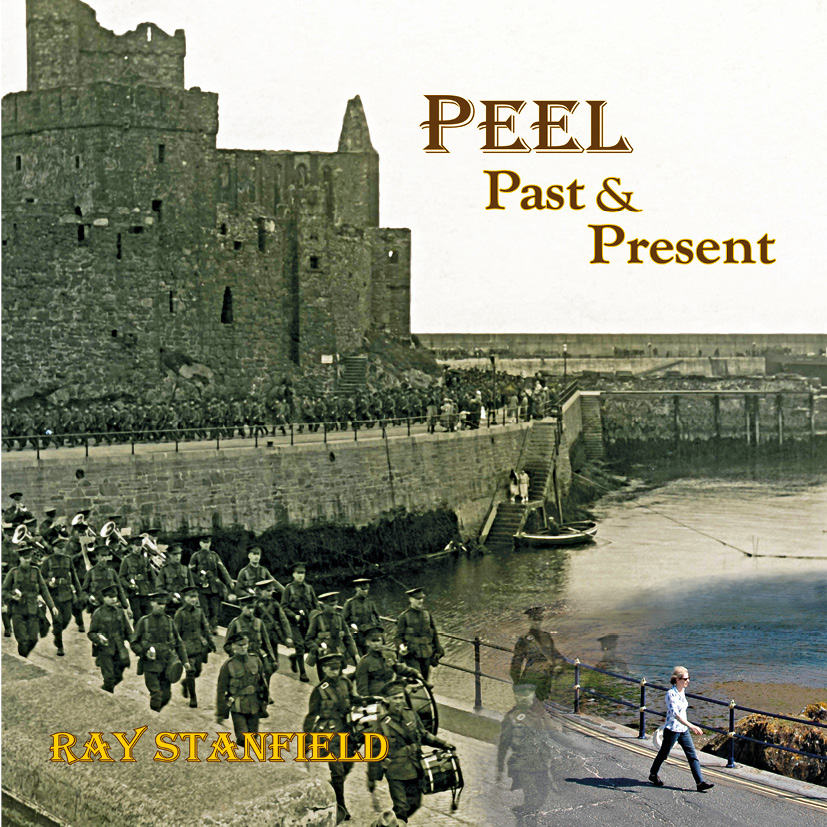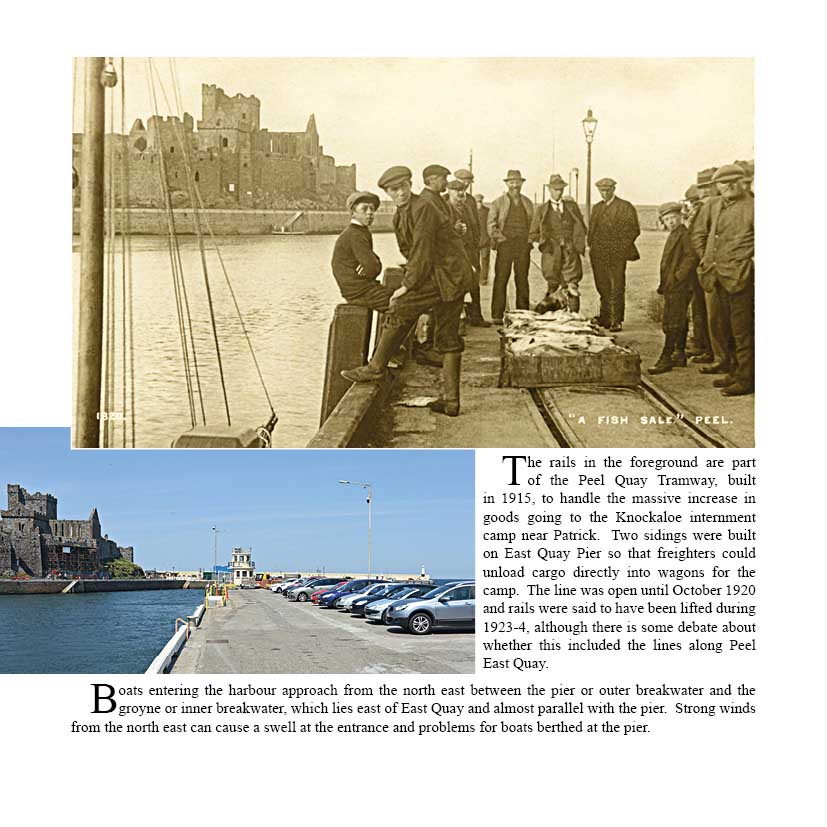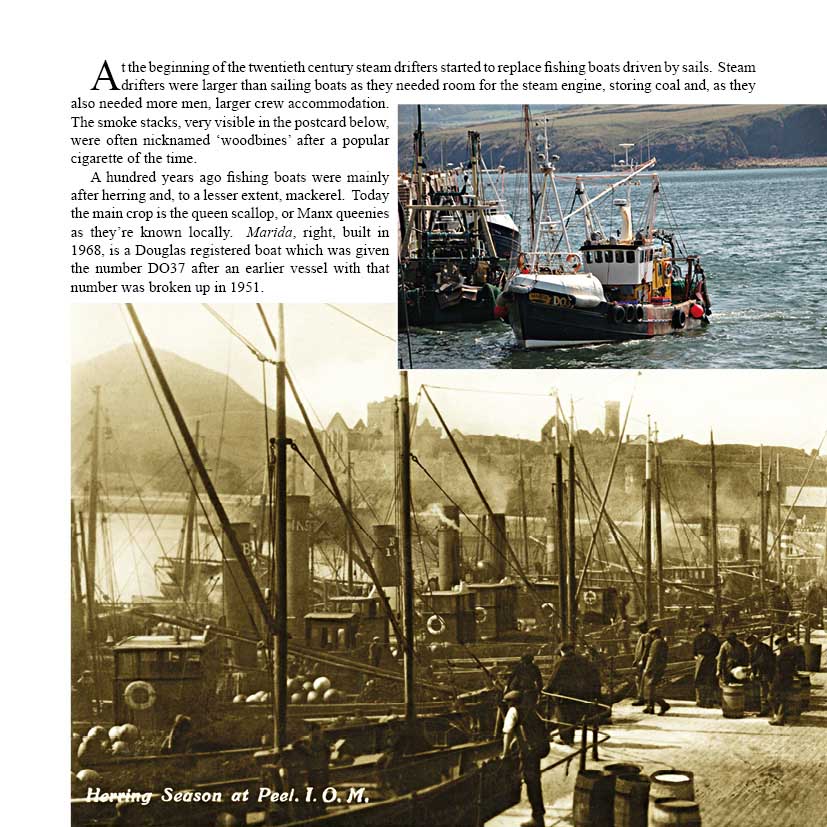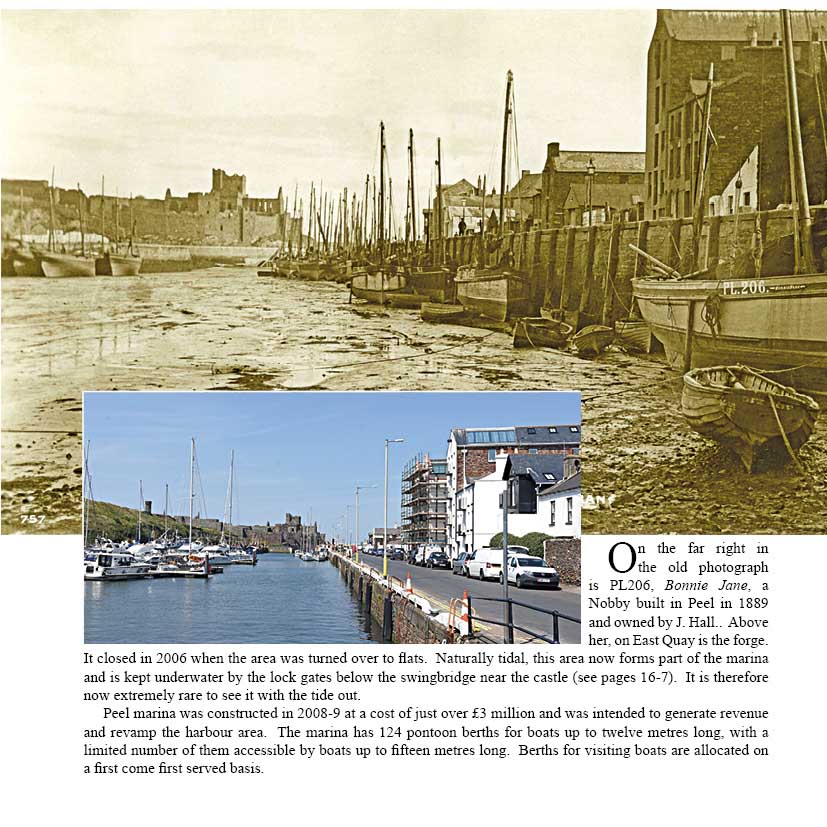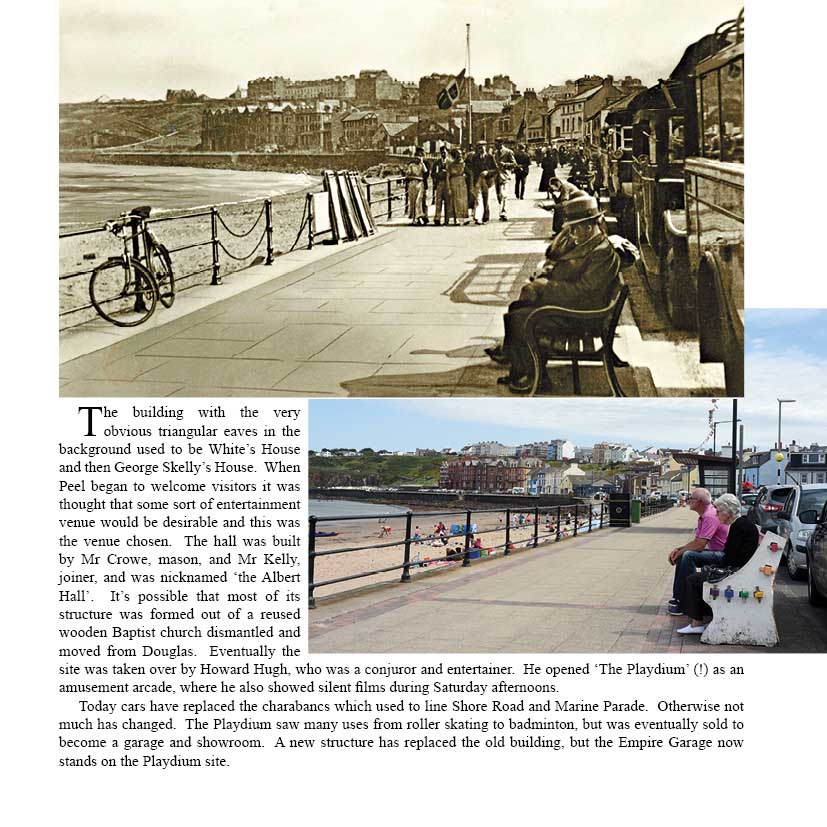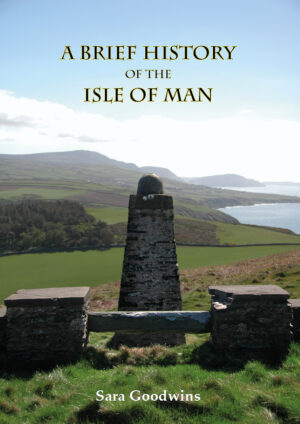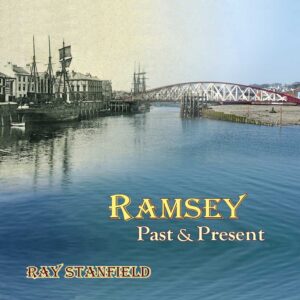Peel: past & present
£13.95
By Ray Stanfield, George Hobbs & Sara Goodwins
Old photographs supplied by Ray Stanfield with matching modern photographs by George Hobbs. Captions by Sara Goodwins
“The Peel Castle Hotel was built in the 1840s after a private house and smaller pub on the site, the Peel Castle Inn, was demolished. Poisoner William Palmer is supposed to have murdered a coach driver, Mr Spurrier, there around 1850.”
Peel; past & present, page 78
Books offering a peek into what a place looked like a century ago are always popular, particularly if there are also photographs of its appearance today. Peel: past & present offers some startling comparisons.
Peel is one of the oldest towns on the Isle of Man, its history bound up with the sea. Fishing shaped the town, with almost every inhabitant not only from the town but also from the surrounding area having some connection with the industry. Even today Peel boasts the largest fishing fleet in the Irish Sea. But the story doesn't end there. When holidaymakers discovered the Isle of Man, Peel's majestic castle, picturesque winding streets and bustling port drew fascinated visitors. The old photographs in this book are drawn from the postcards such visitors sent home.
Much has changed, of course, but it's often surprising just how much has remained the same. Peel: past & present joins its sister publications Ramsey: past & present, Castletown: past & present and Port Erin: past & present in offering a fascinating glimpse into the Isle of Man’s past.
From the Publisher
Most of the old photographs and images used in this book are drawn from Ray Stanfield's extensive collection of postcards. The first picture postcards were published in Britain in 1894 and millions were sent over the next twenty years. Local photographers would often produce them in quite short runs to tempt customers to send or collect them as holiday souvenirs.
But postcards were also the text messages of their day. Before everyone had a phone, the only way to contact friends and relatives was to write to them. Post was delivered several times a day, so it was perfectly possible for a postcard to arrive the same day it was sent - within the island at least. Post your card early enough and you could even get a reply the same day as deliveries went on into the evening. And postcards were cheaper to send than letters.
People therefore sent postcards for all sorts of reasons. Their main importance in this book are the images on the front, of course. Even so, as with its sister volumes about Ramsey, Castletown and Port Erin, when we were putting the book together we were often fascinated by the glimpses the messages gave us of the lives of those who had written them so long ago.
Copyright 2020 Loaghtan Books. All rights reserved.
